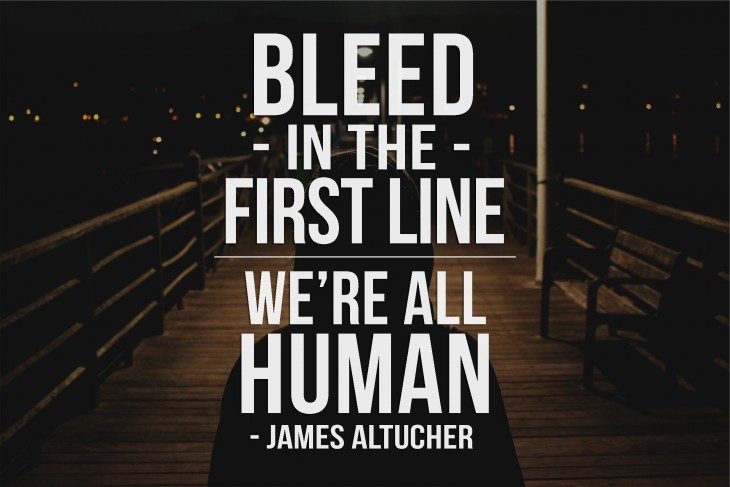
This post originally appeared on the Crew blog.
The more I write, the more I realize how much I still have to learn about good writing.
And beyond just working out what I don’t know, there’s the even harder step of learning to put those things into practice. I’ve been very fortunate to have worked with some excellent editors so far who’ve helped me improve each piece I write. I also try hard to look for tips from other writers that could benefit my own work.
Along the way I’ve picked up some general guidelines that all the best writers seem to know about. Actually applying these to your work is the hardest part, but once you know about them you can start practicing!
The most important part of your piece is the headline
There’s a lot that goes into a piece of writing, and as a writer I sometimes resent the fact that my headline (or, more often, my editor’s headline) is more important than the rest of the piece. But it’s true. The headline is your biggest—sometimes only—chance to get someone to start reading your piece.
Jory Mackay explained the importance of headlines in a recent Crew post:
The headline’s goal is much more important than your body copy. It’s a call to action. It’s you directly asking your reader to invest their time in your words.
You can think of it as a promise that you’re going to fulfill in your post.
James Altucher recommends a shocking title to draw the reader in. He says, “Don’t forget that you are competing against a trillion other pieces of content out there.”
I blew it the other day. I wanted to title this piece: “How I torture women”but I settled for “I’m guilty of torture”. I wimped out. But I have some other fun ones. Like “is it bad I wanted my first kid to be aborted”.
Another option is to try creating a curiosity gap. This means creating some intrigue for the potential reader without giving away the whole story. Here’s an example from Upworthy:
Your introduction should make me want to keep reading
According to Brian Clark from Copyblogger, the purpose of each sentence in your piece is to get the reader to read the next sentence. This counts for your headline too: its purpose is to get the first sentence read. The first sentence should get the second sentence read, and so on.
So once you’ve managed to draw a reader in with your headline, you need to hone your introduction until it reads so smoothly they can’t help but read it. Before they know it, they’re knee-deep in the meat of your argument and didn’t even realise you pushed them there.
What’s the best way to write an introduction? There’s no definitive answer, since you need to find variety in your writing. But all the best writers seem to know some general rules about what does and doesn’t work. For starters,editor Kas Thomas suggests avoiding question openers because they’re overdone:
Starting a piece of writing with a question is not always a bad thing to do. But beware, it’s done a lot. My advice: Don’t go there.
Thomas also points out some other overused intro techniques including starting with a famous quote, using openers like “If you’re like most people…”, or “Most people would agree that…”
James Altucher has some great advice about introductions, though you might find it a little counterintuitive:
Write whatever you want. Then take out the first paragraph and last paragraph.
I’m a big fan of getting to the point and cutting the fluff, but it still scares me to imagine cutting out my whole first paragraph. I thought maybe trying to write less and get to the point more quickly would work the same, but Altucher was way ahead of me (emphasis mine):
Here’s the funny thing about this rule. It’s sort of like knowing the future. You still can’t change it. In other words, even if you know this rule and write the article, the article will still be better if you take out the first paragraph and the last paragraph.
Your conclusion needs to go out with a bang
Again, James Altucher has great advice about ending a piece. I actually picked this up via Crew’s founder, Mikael Cho, who told me, “I’m still working on this, but when those last lines hit home, it seems to create a lasting emotion and connection.”
Your article is meaningless unless the last line KILLS.
Writing the perfect last line for every piece you work on is crazy hard and takes loads of practice. But if you don’t know it’s important in the first place, you won’t practice it at all, so at least we’ve got that first step covered.
When I’m working on a conclusion, I try to remember Altucher’s advice:
The last line should take you all the way back to the first line and then “BOOM!”
Personal stories draw the reader in
Bleed in the first line. We’re all human. A computer can win Jeopardy but still not write a novel. You want people to relate to you, then you have to be human. — James Altucher
I was surprised to look back over my work in the past couple of years and realize the more fragile, fallible, and human I am, the more my readers seem to connect with me.
When I worked at Buffer, co-founder Leo Widrich shared this idea with me based on his own experience noticing the same thing. Leo told me starting a blog post by admitting a mistake is a great way to connect with your audience. You can then go on to use the post to explain how you corrected your mistake, teaching your readers something along the way.
I used this method for my post about introverts and extroverts on the Buffer blog. Here’s part of my introduction:
For a long time I had a certain idea about what makes an introvert or an extrovert. I had always thought that it works something like this:
• Extroversion relates to how outgoing someone is
• Introversion is the same as being shy.
That was kind of my general perception. Doing just a little bit of reading made it clear very quickly – my thinking was way off!
Crew editor Jory Mackay did this as well with his piece, “How I forgot to write”. Jory sets up the piece with a story about a mistake he made. He then goes on to provide advice for his readers about overcoming the same mistake.
Kas Thomas says the personal story approach is common in professional writing:
Professional writers, whenever they can get away with it, like to begin a piece of nonfiction with a personal aside or a personal story.
Thomas suggests using a third-person story if you’re writing about something that doesn’t apply to you. So whether it’s about yourself or someone else, find a personal connection with your reader by telling a human story.
One of the best things about this advice is that it can be used to overcome writer’s block, too. When you’re struggling to write a piece, try writing your struggles into the piece itself. You might edit them out later, but it’s almost guaranteed to get you over the blank page hurdle.
Nobody’s perfect. We’re all trying. Show people how you are trying and struggling. Nobody expects you to be a superhero. — James Altucher
If there’s one theme throughout all these tips that the best writers already know, it seems to be one of storytelling. It’s easy to think you’re not a storyteller when you’re writing nonfiction blog posts or tutorials. But every good writer is a storyteller.
No matter what you write, find the story. Take your reader on a journey throughout your piece—from headline to conclusion—and leave them feeling something.
Read next: The common elements of good storytelling
Get the TNW newsletter
Get the most important tech news in your inbox each week.







